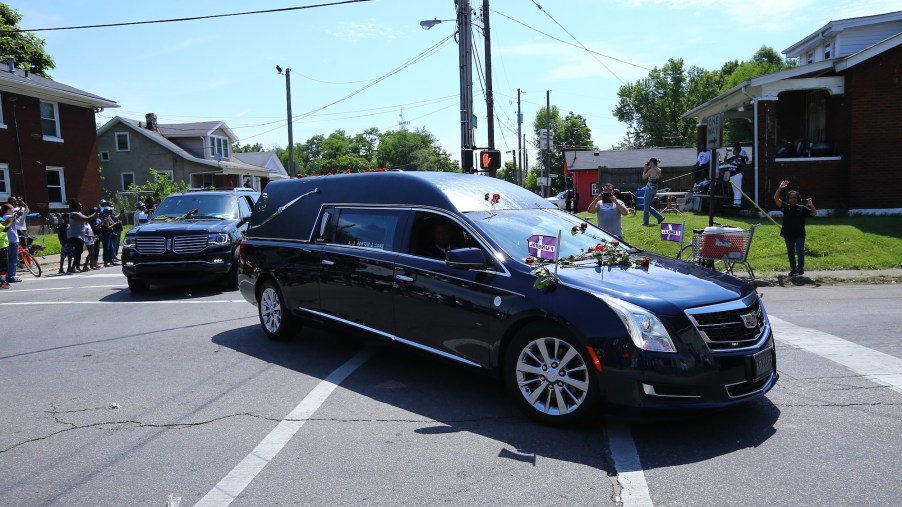
Kentucky Has a Law Requiring Drivers to Pull Over for Funeral Processions
States require motorists to yield the right-of-way to fire trucks, police cars, and other emergency vehicles. Not only is it respectful, but it’s imperative to car safety. First responders often speed to reach people in trouble, and getting in their way could impede their mission or cause an accident.
However, some states also have laws for the departed. In fact, drivers in Kentucky must pull over for funeral processions. Is this a common law in other states too?
Funeral processions in Kentucky
According to Section 189.378 of Kentucky law, a funeral procession must be two or more vehicles accompanying a deceased person. Every vehicle must have its headlights on or have a visible pennant attached. Each car in the procession has the right-of-way at intersections unless a safety officer decides otherwise.
Funeral processions must still pull over for emergency vehicles and stop at train tracks. Attempting to join a procession to continue driving is against the rules. Drivers also aren’t allowed to pass the procession unless the group of vehicles merges onto a highway.
Other states with funeral procession laws
As with Kentucky, most states penalize drivers who try to enter the procession or get ahead of traffic. Many other states grant the right-of-way to funeral processions. In Nevada, a funeral procession’s leader may run red lights and exceed the speed limit by 15 mph.
Drivers in a procession can also travel above the posted speed limit in Idaho and Arizona. In Illinois and Maryland, the procession’s leader still must adhere to stop signs and red lights, but the vehicles accompanying it do not.
However, in Michigan, funeral processions have the right-of-way only when the leading vehicle is wearing an orange flag. This signifies the party is headed to a burial ground. In Virginia, the procession has the right-of-way only if a police escort guides it.
Massachusetts law says a procession must have less than 10 vehicles to have right-of-way. Some state laws mention funeral processions despite not explicitly granting right-of-way. California also requires a police escort for processions. And procession that lasts more than five minutes must brake for traffic in New Jersey.
Why should you pull over?
Funeral processions usually don’t move quickly or blare sirens, so many motorists don’t know they’re supposed to yield. Attempting to join a procession as it proceeds through a red light might be tempting, but it’s potentially dangerous. It could prompt other people to run red lights and cause accidents mistakenly. That’s why it used to be a requirement in all areas for police to lead funeral processions.
It’s also considered disrespectful to the departed’s family to pass the procession unless on a highway. You might be in a hurry, but funerals are sorrowful experiences for the mourners. Having it halted over a traffic dispute could make the experience a greater hardship.
What to do if you’re outside a funeral procession
You can easily distinguish a funeral procession from a line of regular cars because of the lit headlights. In some states, the lead vehicle is also required to have its hazard lights on. You should pull over or yield the right-of-way until the entire procession has passed.
If you must pass on a highway, avoid doing so on the right side. Placing your vehicle in the blind spots of a group of slowly moving cars is an accident waiting to happen.



